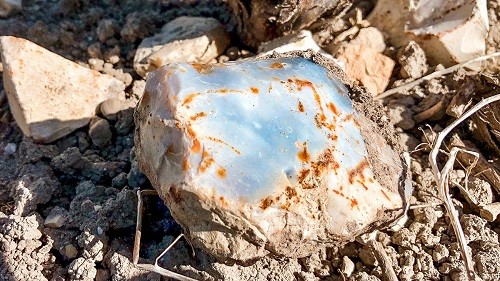Abstract: Many white wines contain the unique flavor of flint. What is Flint Flavor? Where does this flavor come from? How does it affect the quality of the wine? This article will demystify flint flavors in wine.
Some wine lovers may not know exactly what a flint flavor is. In fact, many white wines contain this unique flavor. However, when we first came into contact with this flavor, we may not be able to find the exact words to describe this unique taste, so we have to use similar fruit aroma instead.
Flint flavor is often found in dry white wines with crisp acidity, giving people a feeling similar to mineral taste, and flint flavor is similar to the smell produced by a match struck across metal.
Flint is closely related to terroir. Sauvignon Blanc from the Loire Valley is a good example. When tasting Sauvignon Blanc from Sancerre and Pouilly Fume, we can get a sense of the Loire’s signature flint terroir. The rocky soil here is the result of erosion, which has created a variety of soil types over millions of years.
There is a Domaine des Pierrettes in the Touraine region of the Loire Valley in France. The name of the winery actually means “little stone winery” in French. Owner and winemaker Gilles Tamagnan credits the flint soil for bringing a unique character to his wines.
In the world of wine, minerality is a relatively broad concept, including flint, pebbles, firecrackers, tar, etc. “The terroir here gives grapes like Sauvignon Blanc a unique flint flavor. In our wines, we can really taste the flint!” said Tamagnan.
The soil of Touraine is often mixed with flint and clay. Clay can bring a smooth and silky texture to white wine; the hard and smooth surface of flint can absorb a lot of heat from the sun during the day and dissipate heat at night, making the grape ripening rate more stable and the ripeness of each plot more consistent. In addition, flint imparts an unrivaled minerality to the wine, and spices develop in aged wines.
Most of the wines made from grapes bred in flint soil are medium-bodied, with crisp acidity, and are suitable for food pairing, especially lighter seafood such as shellfish and oysters. Of course, the foods that these wines pair well with are much more than that. Not only do they pair well with dishes in creamy sauces, but they also go well with dishes like beef, pork, and chicken that are full of flavor. Plus, these wines are great on their own, even without food.
Mr. Tamagnan concluded: “The Sauvignon Blanc here is expressive and well-balanced, with hints of smoke and flint, and the palate reveals slightly sour citrus flavors. Sauvignon Blanc is the grape variety of the Loire Valley. There is no doubt that this variety most expresses the unique flint terroir of the region.”
Post time: Feb-18-2023

